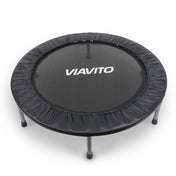There is so much bad fitness information out there. Making prescriptive rules and laws around how to work out. Not only does this suck the fun out of exercising but can also lead to injury. So today we wanted to bust 6 of those myths that might be holding you back from doing a form of fitness that you enjoy or that are causing you to train in a way that doesn't suit your body.
1. You need to ache the next day
Whether it’s a weights session at the gym, a spin class or playing rugby, we all know the feeling of post-workout body aches. In most cases, this is caused by DOMS - delayed onset muscle soreness.
This is either from a novel strain (new weight) or a new exercise i.e. trying something new. But feeling sore isn’t a key indicator that you’ve had a good workout. You could have a great workout and feel fine the next day - your body adapts the more you do a particular type of training.
However, if you’re never feeling achy it can mean that you need to change up your workouts somewhat. Whether that’s new exercises, forms of training or switching up reps - the smallest of changes can make all the difference. Ultimately, you want to be somewhere in the middle - not incapacitated by DOMS but feeling challenged at times too.
2. You need to sweat to have a good workout
First of all everybody’s sweat mechanisms differ - we all sweat at different levels. You could put two people through the same workout and the likelihood is that they’d both sweat different amounts.
Besides, there are plenty of forms of exercise that aren’t likely to make you sweat - swimming, yoga, weightlifting (sometimes) to name just a few. Sweating does not correlate to how hard you’ve worked or the calories you’ve burned. It is just your body’s way of cooling itself down.
So don’t base your workouts on how much they make you sweat - it’s simply not a good or reliable marker of work or progress.
3. You should always be out of breath
Not all forms of exercise make you out of breath - and neither should it. While cardio (running, HIIT, cycling or swimming) actively targets your cardiovascular system, it doesn't have to be the only type of exercise you’re doing.
Weight training by nature involves much slower movements, often not causing you to be out of breath for long periods. Yoga, walking, slower-paced swimming and slower-paced cycling are all valid types of exercise but won’t necessarily make you out of breath.
If your goal is to improve your cardiovascular system, then by all means focus on cardio as your key exercise type. But, if it’s not your thing to be constantly puffed, there are plenty of other forms of exercise types to try.
4. You shouldn't take any rest days
Rest days are just as important as your training days. This might sound counterintuitive but rest days are when your body repairs, responds and strengthens from your training.
Aim to have at least 1-2 rest days a week - listening to your body when you need them. Also on these days, there’s no need to massively reduce what you’re eating. These are days of repair for your muscles so protein, fats and carbs are all essential to get your body ready to work out again. Again, listen to what your body needs and respond to those hunger cues!
5. You can reduce fat in specific areas
As great as this could be, this is a big fat (excuse the pun) lie. Of course, you can engage in exercises to strengthen and build muscle in particular areas. Let’s take your abs for example - core exercises will build muscle tone, but to see the abs overall body fat must be reduced.
It’s also important to note that all of us carry fat and muscle in proportions. Some may hold far it in our legs, arms, tummy or face, whilst others may naturally have very flat stomachs, muscular legs or arms. This is mostly genetic, so desperately trying to change a specific body part will ultimately leave you feeling defeated. So instead of focusing on one area, make overall fat loss your goal. Or forget about aesthetics and drive towards another goal such as improving your strength.
6. You shouldn’t train on an empty stomach
Now, this really comes down to how you feel and your lifestyle. Some people often train fasted in the mornings - getting up early before work and completing their workout before starting for the day. Alternatively, plenty of people work out later in the day as it better fits with their schedule.
Whether you’ve had no meals or all three and snacks, there isn’t much difference in terms of results. Just go with whatever set up is most convenient and makes your body feel good. Sticking to rules around when to train and eating patterns can hinder you from achieving consistency - which is the element that makes the most amount of difference when it comes to seeing results.
We hope these pointers have busted some of the stupid fitness myths out there. Ultimately when it comes to programming in your fitness, focus on your own individual goals, training how and when feels right for you.

